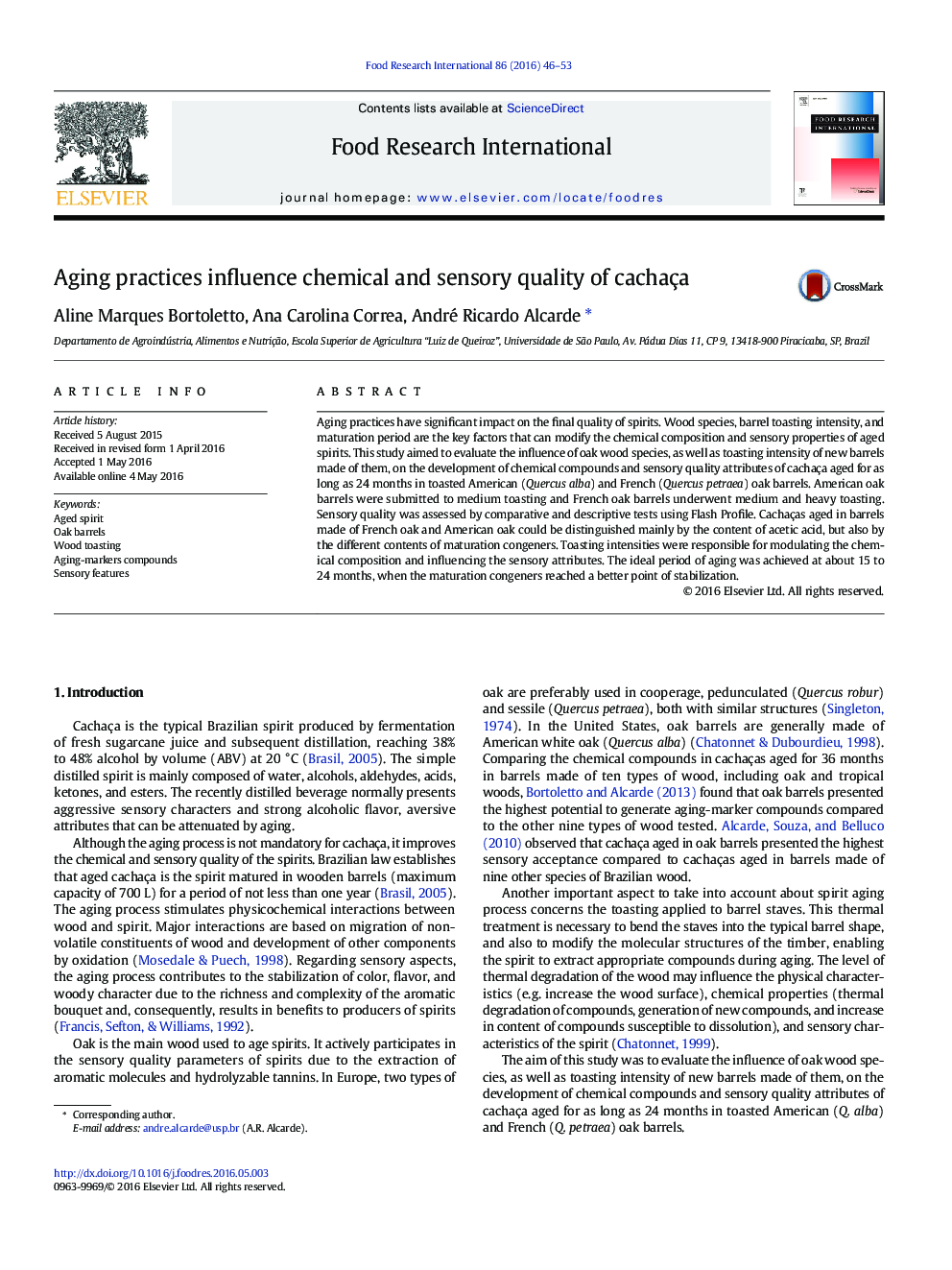| Article ID | Journal | Published Year | Pages | File Type |
|---|---|---|---|---|
| 4561177 | Food Research International | 2016 | 8 Pages |
•Oak species can be distiguished mainly due to the contents of some compounds.•The kinetics of maturation congener formation was confirmed.•Aged cachaças presented balanced oxidation pathways and formation of lignin derivative congeners.•Better stabilization of maturation congeners was achieve about 15 to 24 months of aging•Toasting modulates chemical composition and sensory attributes of aged spirits.
Aging practices have significant impact on the final quality of spirits. Wood species, barrel toasting intensity, and maturation period are the key factors that can modify the chemical composition and sensory properties of aged spirits. This study aimed to evaluate the influence of oak wood species, as well as toasting intensity of new barrels made of them, on the development of chemical compounds and sensory quality attributes of cachaça aged for as long as 24 months in toasted American (Quercus alba) and French (Quercus petraea) oak barrels. American oak barrels were submitted to medium toasting and French oak barrels underwent medium and heavy toasting. Sensory quality was assessed by comparative and descriptive tests using Flash Profile. Cachaças aged in barrels made of French oak and American oak could be distinguished mainly by the content of acetic acid, but also by the different contents of maturation congeners. Toasting intensities were responsible for modulating the chemical composition and influencing the sensory attributes. The ideal period of aging was achieved at about 15 to 24 months, when the maturation congeners reached a better point of stabilization.
